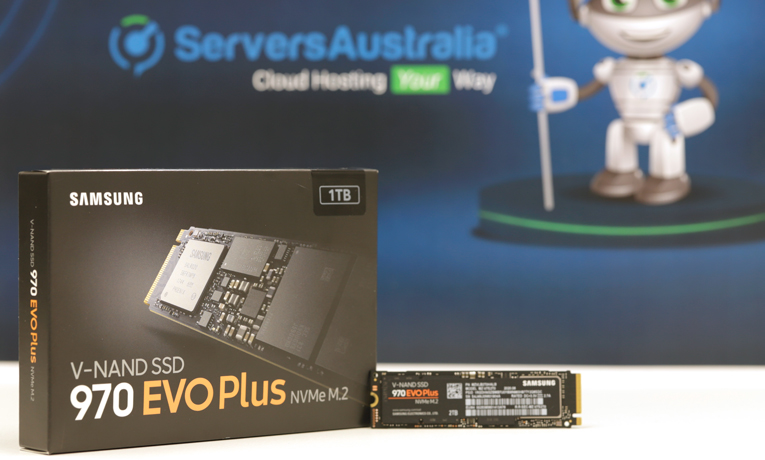Discover the Secret to Lightning-Fast Storage - NVMe Storage
Last Updated: January 8th, 2025 7 min read Servers Australia

In a world where data is at the heart of business operations, having a fast, reliable, and efficient storage solution is no longer optional—it’s a necessity. Enter Non-Volatile Memory Express (NVMe), a groundbreaking storage technology that is changing the way businesses and cloud providers handle data. While NVMe might sound like a complex technical concept, this guide is designed to make it simple and accessible, even if you’re not a tech expert.
By the end of this article, you’ll understand what NVMe is, why it’s crucial for modern businesses, and how it can supercharge your cloud journey. We’ll also dive into a real-life customer story that demonstrates the transformative power of NVMe. So let’s unravel the mystery of this technology together.
What Is NVMe?
To put it simply, NVMe, or Non-Volatile Memory Express, is a modern standard for storage technology. It’s designed specifically for solid-state drives (SSDs) that use the PCI Express (PCIe) interface, enabling incredibly fast data transfer speeds and low latency.
Think of NVMe as the new language that computers and SSDs use to communicate. Traditional storage interfaces, like SATA and SAS, were originally designed for spinning hard disk drives (HDDs). They work, but they can’t fully harness the speed and capabilities of modern SSDs. NVMe, on the other hand, was created from the ground up to take full advantage of SSD technology.
In practical terms, NVMe can be up to seven times faster than SATA-based SSDs, making it an ideal choice for businesses that need blazing-fast performance.
How Does NVMe Work?
NVMe acts as a bridge between your computer’s PCIe device and its operating system’s device driver. Unlike legacy interfaces, which are limited in their ability to handle multiple data requests simultaneously, NVMe allows for up to 64,000 queues, each capable of managing 64,000 commands at the same time. This unprecedented scalability and parallelism enable NVMe to process large amounts of data with minimal delay.
Imagine a traditional highway with a single lane where only one car can pass at a time. Now picture a modern freeway with dozens of lanes, each capable of handling thousands of cars simultaneously. That’s the difference NVMe makes in the world of data storage.
NVMe allows for up to 64,000 queues, each capable of managing 64,000 commands at the same time.
Why Would You Need NVMe?
If you’ve ever waited for a large file to load or struggled with a sluggish application, you’ve experienced the limitations of traditional storage. For businesses, these delays can translate to lost productivity, frustrated customers, and missed opportunities. NVMe addresses these challenges head-on by providing the speed and reliability modern applications demand.
Common Use Cases
NVMe is particularly beneficial for:
Data-Intensive Applications: Tasks like video editing, data analytics, and AI require quick access to large files.
Cloud Computing: Fast and scalable storage is essential for cloud providers to meet the demands of their users.
Enterprise Operations: From managing databases to running virtual machines, NVMe improves efficiency across the board.
The Benefits and Features of NVMe
Let’s explore what sets NVMe apart and why it’s becoming the go-to storage solution for businesses and cloud environments.
Speed and Performance
NVMe’s most obvious advantage is its speed. With read and write speeds that can reach up to 3,500 MB/s, it outpaces SATA SSDs and leaves traditional HDDs in the dust. This speed is crucial for tasks that require real-time data access, such as streaming services, financial transactions, and e-commerce platforms.
Low Latency
Latency refers to the time it takes for data to travel from storage to the processor. NVMe minimises this delay, offering response times as low as 10 microseconds. For comparison, a typical 7,200 RPM SATA HDD has a latency of several milliseconds. This difference might seem small, but in high-stakes environments, every microsecond counts.
Scalability
Traditional storage interfaces are limited in how much data they can process simultaneously. NVMe’s ability to handle 64,000 queues with 64,000 commands each makes it an excellent choice for businesses that anticipate growth or deal with fluctuating workloads.
Compact Design
Many NVMe drives use the M.2 form factor, a small, rectangular shape that connects directly to the motherboard. This design saves space, allowing for more efficient use of hardware and easier upgrades.
How NVMe Can Help Your Business
In today’s competitive landscape, businesses need every edge they can get. NVMe delivers that edge by enabling faster, more reliable operations.
Boosting Productivity
Slow storage can be a bottleneck that holds your business back. Whether you’re processing large datasets or managing complex workflows, NVMe ensures that your technology keeps up with your team’s needs.
Enhancing Customer Experience
From faster website load times to seamless app performance, NVMe helps you deliver a superior experience to your customers. This can lead to higher satisfaction rates, better reviews, and increased loyalty.
Supporting Innovation
With NVMe, you can explore new possibilities, such as implementing AI-driven insights or expanding into new markets. Its high-speed capabilities make it easier to experiment and innovate without being constrained by technical limitations.
NVMe and the Cloud Journey
As businesses increasingly migrate to the cloud, the need for fast, scalable storage becomes even more critical. NVMe plays a pivotal role in enabling cloud providers to deliver the performance their users expect.
Why NVMe Is Essential for Cloud Computing
Cloud environments often involve massive amounts of data being accessed and processed simultaneously. NVMe’s speed and scalability make it the perfect fit for these demands. Whether you’re hosting a website, running a virtual machine, or storing backups, NVMe ensures that your cloud operations run smoothly.
Cost Efficiency
While NVMe drives were once considered expensive, their prices have become more competitive. The performance gains they offer can lead to significant cost savings over time by reducing downtime, speeding up workflows, and minimising maintenance needs.
Technical Insights: What Makes NVMe Unique
Understanding the technical aspects of NVMe can help you appreciate its capabilities. Unlike SATA and SAS, which were designed for HDDs, NVMe was built specifically for SSDs. This focus allows it to leverage the full potential of flash storage, providing a seamless experience that older technologies simply can’t match.
For example, NVMe’s direct connection to the CPU via PCIe enables higher bandwidth and lower latency. This is in stark contrast to SATA, which acts as a middleman that slows down communication.
Customer Story: How NVMe Transformed a Business
Let’s take a look at a real-life example. A mid-sized e-commerce company was struggling with slow website performance during peak shopping hours. Their existing SATA-based storage couldn’t handle the high volume of simultaneous transactions, leading to frustrated customers and lost sales.
After upgrading to NVMe storage, the company saw immediate improvements. Website load times decreased by 50%, and their system could handle twice as many transactions without crashing. This not only boosted their revenue but also improved customer satisfaction. The transition to NVMe turned out to be a game-changer, enabling the business to scale and compete more effectively.
Future of NVMe
The potential of NVMe is only beginning to be realised. As data demands continue to grow, this technology is expected to play an even larger role in shaping the future of storage. From advancements in AI to the expansion of 5G networks, NVMe will be at the forefront of innovation.
Conclusion
NVMe isn’t just another storage technology—it’s a revolution. Its speed, scalability, and reliability make it a must-have for businesses looking to stay ahead in a data-driven world. Whether you’re running a small business, managing a data centre, or embarking on a cloud journey, NVMe offers the performance and efficiency you need to succeed.
Now that you’ve uncovered the power of NVMe, it’s time to consider how it can transform your operations. With the right strategy and tools, you can harness the full potential of this cutting-edge technology and set your business up for long-term success.




